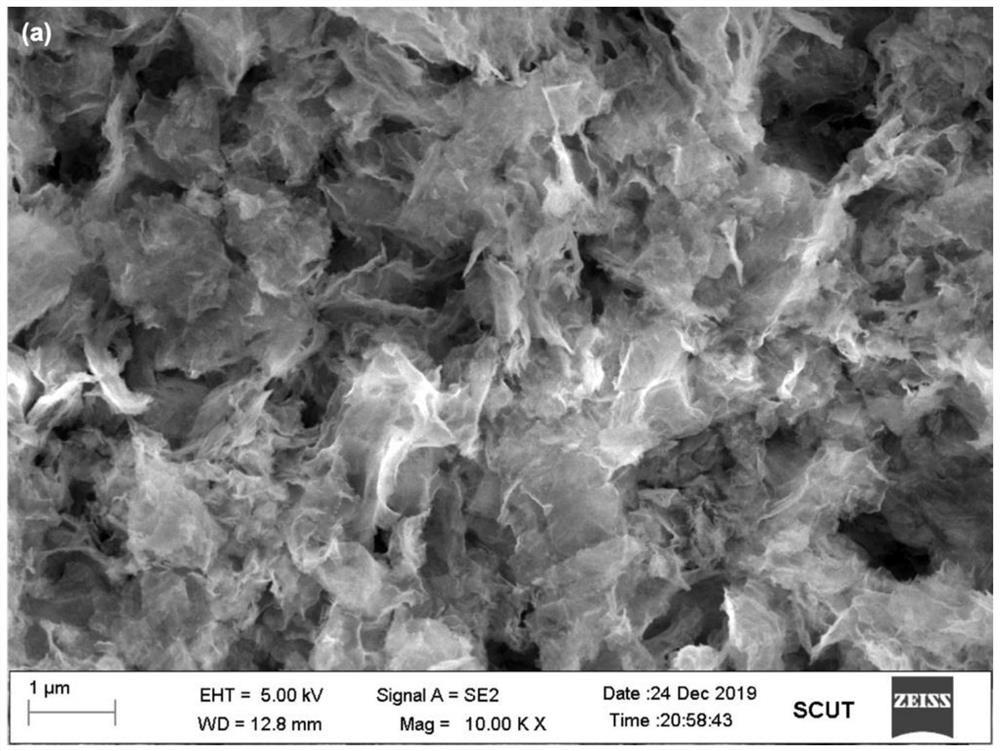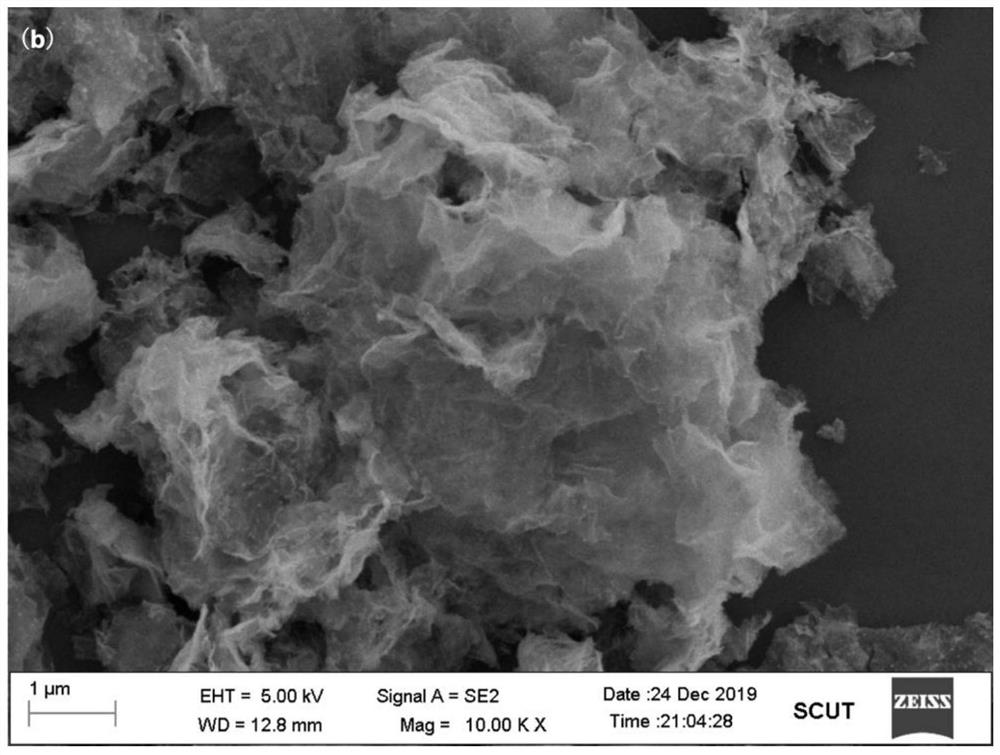Nano-enzyme bactericide based on bimetal organic framework as well as preparation method and application of nano-enzyme bactericide
An organic framework, bimetal technology, applied in the field of nano-enzyme bactericide and its preparation, can solve the problems of low stability, poor catalytic effect, inability to achieve sterilization effect, etc., and achieves inhibition of bacterial growth, low cost, enhanced electronic The effect of passing
- Summary
- Abstract
- Description
- Claims
- Application Information
AI Technical Summary
Problems solved by technology
Method used
Image
Examples
Embodiment 1
[0041] A kind of application of nano-enzyme bactericide based on double metal organic framework in inhibiting food-borne pathogenic bacteria, its steps are as follows:
[0042] (1) Dissolve 0.5mmol of cerium nitrate, 0.5mmol of copper nitrate and 1mmol of pyromellitic acid into 25mL of ethanol at the same time, mix well and place the solution on a magnetic stirrer (speed 1200rpm), and mix and react at room temperature for 2.5h ; After the reaction, the product was obtained by centrifugation, washed 5 times with ethanol, and then vacuum-dried at 60° C. for 12 hours to obtain a bimetallic organic framework;
[0043] (2) Place the bimetallic organic framework described in step (1) in a tube furnace (temperature 300° C.), and then calcinate it for 2.5 hours in an air atmosphere to obtain a nanozyme fungicide, which is stored in a sealed container at room temperature ;
[0044](3) Take a small amount of Escherichia coli (ATCC700728) strains on the LB solid medium, then place the L...
Embodiment 2
[0049] A kind of application of nano-enzyme bactericide based on double metal organic framework in inhibiting food-borne pathogenic bacteria, its steps are as follows:
[0050] (1) Dissolve 0.5mmol of cerium nitrate, 0.5mmol of copper nitrate and 1mmol of pyromellitic acid into 25mL of ethanol at the same time, mix well and place the solution on a magnetic stirrer (speed 1200rpm), and mix and react at room temperature for 2.5h ; After the reaction, the product was obtained by centrifugation, washed 5 times with ethanol, and then vacuum-dried at 60° C. for 12 hours to obtain a bimetallic organic framework;
[0051] (2) Place the bimetallic organic framework described in step (1) in a tube furnace (temperature 300° C.), and then calcinate it for 2.5 hours in an air atmosphere to obtain a nanozyme fungicide, which is stored in a sealed container at room temperature ;
[0052] (3) Take a small amount of Staphylococcus aureus (ATCC6538) strains on the LB solid medium, and then cul...
Embodiment 3
[0057] A kind of application of nano-enzyme bactericide based on double metal organic framework in inhibiting food-borne pathogenic bacteria, its steps are as follows:
[0058] (1) Dissolve 0.5mmol of cerium nitrate, 0.5mmol of copper nitrate and 1mmol of pyromellitic acid into 25mL of ethanol at the same time, mix well and place the solution on a magnetic stirrer (speed 1200rpm), and mix and react at room temperature for 2.5h ; After the reaction, the product was obtained by centrifugation, washed 5 times with ethanol, and then vacuum-dried at 60° C. for 12 hours to obtain a bimetallic organic framework;
[0059] (2) Place the bimetallic organic framework described in step (1) in a tube furnace (temperature 300° C.), and then calcinate it for 2.5 hours in an air atmosphere to obtain a nanozyme fungicide, which is stored in a sealed container at room temperature ;
[0060] (3) Take a small amount of Salmonella (ATCC14028) strains and streak on the LB solid medium, then place ...
PUM
 Login to View More
Login to View More Abstract
Description
Claims
Application Information
 Login to View More
Login to View More - R&D
- Intellectual Property
- Life Sciences
- Materials
- Tech Scout
- Unparalleled Data Quality
- Higher Quality Content
- 60% Fewer Hallucinations
Browse by: Latest US Patents, China's latest patents, Technical Efficacy Thesaurus, Application Domain, Technology Topic, Popular Technical Reports.
© 2025 PatSnap. All rights reserved.Legal|Privacy policy|Modern Slavery Act Transparency Statement|Sitemap|About US| Contact US: help@patsnap.com


